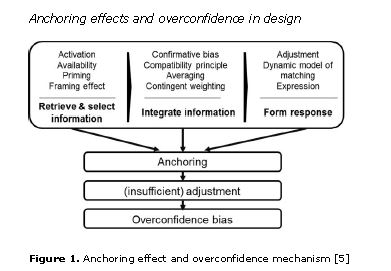To Be Biased or Not To Be: Choosing Between Design Fixation and Design Intentionality
ACM CHI (2013)
Jieun Kim, Hokyoung Ryu & Hyeonah Kim

|
Abstract: In the study, we explored potential design decision biases by understanding the relationship of the information being used and overconfidence of design outcomes that arise from the anchoring process in design. A total of twenty-eight industrial designers carried out a two-way between-subjects study administered by the four types of design exercise. Designers showed a strong anchoring effect when they employed “consistent knowledge-evidence” information rather than “inconsistent knowledge-evidence” information given. The empirical findings shed light on a double-edged anchoring effect in the design process, further suggesting the implications of the use of design information for educating HCI practitioners.
|
| In particular, we found that consistent design knowledge and evidence might increase a designer‟s overconfidence in their design solution, which in turn might lead to discouraging them from exerting less effort to find another solution. However, at the same time, it might be easier to convey their original design intentionality to the user in the relatively biased groups, which what they have used, if the design information is adequate. |
| Link to read more, http://bit.ly/29L5hVb |
|